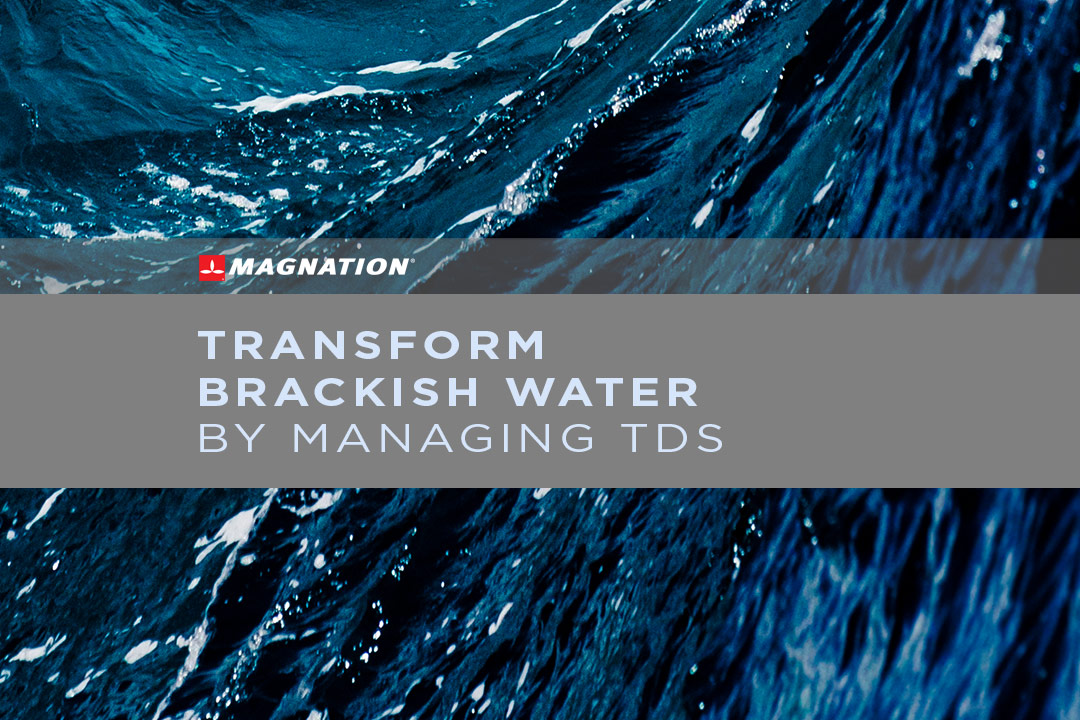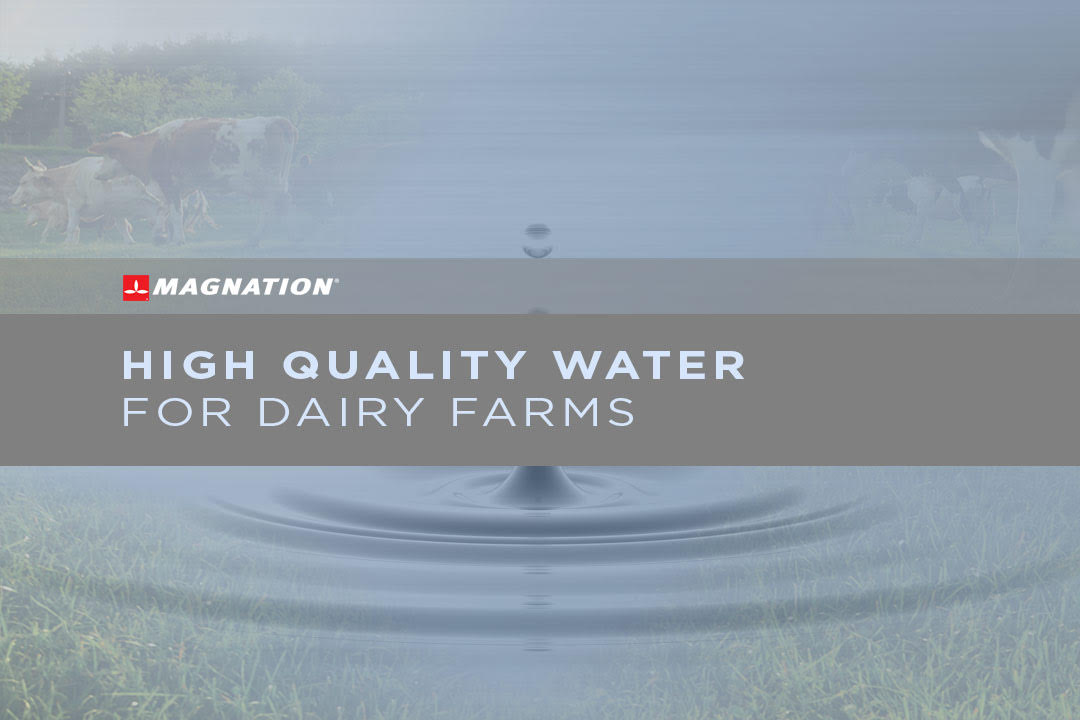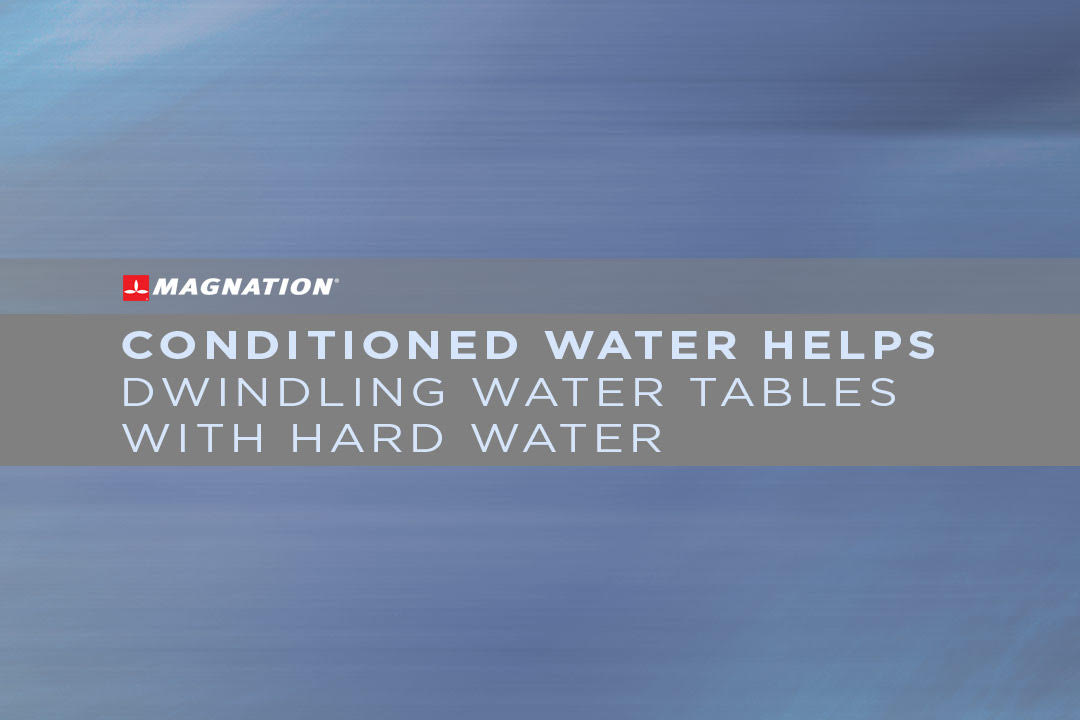
Magnation Water Technology Transforms Brackish Water by Managing Total Dissolved Solids
Brackish water has a higher dissolved-salts content than fresh water but less dissolved content than seawater. The total dissolved salts include moderate-to-high levels of sodium, potassium, calcium ion, magnesium, chlorine, sulfur dioxide, bicarbonate, and carbonate.
Salt-tolerant crops can tolerate the use of brackish water for irrigation. The tolerances increase in regions that have deep sandy soils that allow drainage. However, many food crops and grasses have low salt tolerance and will not achieve proper growth or survivability when irrigated with brackish water. Despite the problems associated with brackish water, the potential of brackish water as a water resource exists because of its abundance and the possibilities for desalinating the water. Referring to the map shown in figure one, brackish groundwater lies beneath most of the United States.
Image Source: United States Geological Survey - National Brackish Water Assessment (https://water.usgs.gov/ogw/gwrp/brackishgw/study.html)
Unfortunately, several factors limit that potential. Although some agricultural enterprises use brackish water, the salinity of brackish water does not allow its use for human or animal consumption. While technological advances have occurred, desalinating brackish water remains expensive.
High TDS Content in Brackish Water Causes Damage
The concentration of mostly chloride-based dissolved solids in brackish water ranges between 1,000 to 2000 parts per million (PPM). The dissolved solids that cause water to become brackish water have several sources. Natural salt deposits left by ancient seas in sedimentary basins can become carbonates that dissolve into groundwater through chemical decomposition. Rainwater that has a higher acid content reacts with dust, soils, and rocks to dissolve minerals and increase soil salinity.
Brackish water can also transfer between aquifers and mix with fresh water. The mixing of brackish water can happen through well boreholes and the natural upward leakage between aquifers. Applications of soil supplements can also introduce organic salts into soil. Any run-off from fertilizer applications can accumulate in groundwater, streams, and rivers and increase salinity.
The mix of inorganic salts and organic matter can impact the taste of water and cause both corrosion and encrustation in water systems. Because the encrustation occurs as calcium carbonate or magnesium mineral scale in water pipes, water heaters, boilers, and household appliances, total dissolved solids (TDS) shorten equipment operating lifespans and--without conditioning to remove the scale--can reduce the energy efficiency of systems or inhibit performance.
Irrigation with brackish water for crops that have not adapted to saline conditions prevents plants from reaching full growth potential. High saline conditions impede plant development and affect the ability of plants to germinate. The higher concentrations of salt in the water and soil push plants to increase the amount of energy needed to extract water. As a result, plants may exhibit less leaf area, reduced shoot growth, and increased water stress. Crops that have minimal salt tolerance have leaf injury symptoms and do not survive.
Along with the salts found in brackish water, trace amounts of other chemicals contribute to the overall amount of total dissolved solids (TDS) found in brackish water. Toxic chemicals include boron, selenium, strontium, lithium, silicon monoxide, fluorine, molybdenum, manganese, barium, and aluminum can eventually become part of the food chain by accumulating in soils and plants. As an example of the impact of those chemicals, excessive amounts of boron cause reductions in yield for many crops and leaf damage. Selenium toxicity can cause birth defects and deaths in waterfowl, poison young animals, and cause nausea, hair loss, and irritability in humans.
Magnation Water Technologies Condition Brackish Water and Remove TDS
Brackish water offers the potential for solving the deepening water crisis. Steps toward achieving this potential have included mixing brackish water with quality water and matching the salinity of brackish water with the saline-tolerance of crops. Sampling methods include testing for levels of electrical conductivity (EC) to discover the concentration of ions, checking the sodium adsorption ratio (SAR) to determine the amount of sodium compared to the presence of calcium and magnesium in water, and tests to find concentrations of toxic chemicals. Although those methods have offered some success with drip irrigation, any use of brackish water for sprinkling irrigation can damage crop foliage.
Desalination plants can convert brackish water for human consumption. However, high costs and increased energy use accompany the construction, operation, and maintenance of the plants. Other costs for desalination include transferring the treated water for agricultural use. Reverse osmosis offers another solution by forcing brackish water through membranes separate total dissolved solids from water. The costs of disposing the brine that contains the solids and replacing worn membranes take away from the efficiency of reverse osmosis. In addition, reverse osmosis may not remove some toxic chemicals--such as boron--from brackish water.
Products offered by Magnation Water Technologies provide cost-effective and efficient methods for removing total dissolved solids from brackish water. Magnation products such as the Rainbolt, Rainbolt Well, and Aquabolt feature a combination of turbulence and magnetics that separate TDS from water and reduce the presence of organic and inorganic salts along with toxic chemicals by 15-to-17 percent. By reducing viscosity and surface tension, the products solve high TDS problems without the use of chemicals, acid washes, or increased energy use. The sustainable irrigation gained through the application of Magnation Water Technologies improves agricultural production and improves the turfgrass used for sports facilities. To learn more about the benefits provided by Magnation’s full product line, contact a Magnation water conditioning expert.










Comments
Add Comment